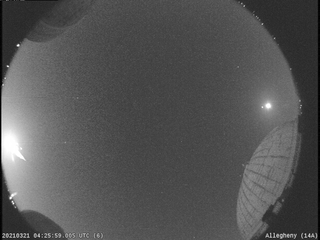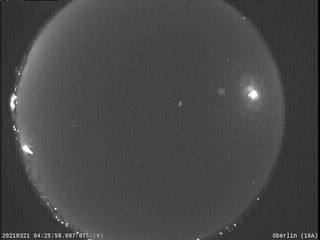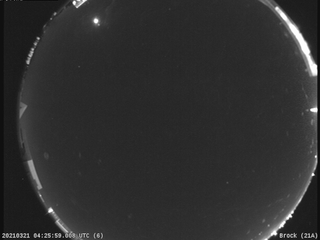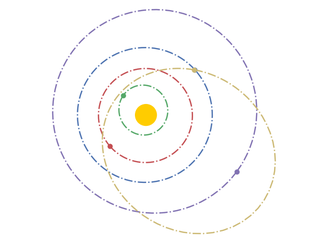Event: 20210321-042559
Observers in a wide area – North Carolina to New Hampshire and from Michigan to the Atlantic coast - are filing reports of a very bright fireball observed at 12:26 AM Eastern Daylight Time (2021 March 21 4:26 UTC). The meteor was also detected by 3 meteor cameras belonging to the NASA Fireball Network and 2 cameras of the Southern Ontario Meteor Network. A quick analysis of the best set of video data from these systems shows that the object first became visible 55 miles (88 kilometers) above the town of Greenstone, near the Pennsylvania/Maryland border. Moving northwest at 51,000 miles per hour (23 kilometers per second), the fireball traversed 38 miles (61 kilometers) through the atmosphere before fragmenting 28 miles (45 kilometers) above the Pennsylvania town of Newburg. The orbit of the object and the brightness of the event (roughly that of the gibbous Moon) indicate that the fireball was caused by an asteroidal fragment weighing 7 pounds (3 kilograms) and about 5 inches (13 centimeters) in diameter. The end flare of the fireball was also detected (barely) by the Geostationary Lightning Mapper on GOES-16.
Images and Video from NASA and Western University's Southern Ontario Meteor Network





Meteoroid Orbit

Event Data
| Event ID | 20210321-042559 |
| Date (UTC) | March 21, 2021 |
| Time (UTC) | 04:25:59 |
| AMS Event | 1786-2021 |
| Size | 7 pounds and 5 inches in diameter |
| Origin | Asteroidal |
| NASA Camera Start Lat/Lon | +39.767, -77.427 |
| NASA Camera End Lat/Lon | +40.139, -77.593 |
| NASA Camera Altitude | 88.4 km → 45.4 km ( 54.9 miles→ 28.2 miles) |
| NASA Camera Speed | 22.8 km/s (51,000 mph) |